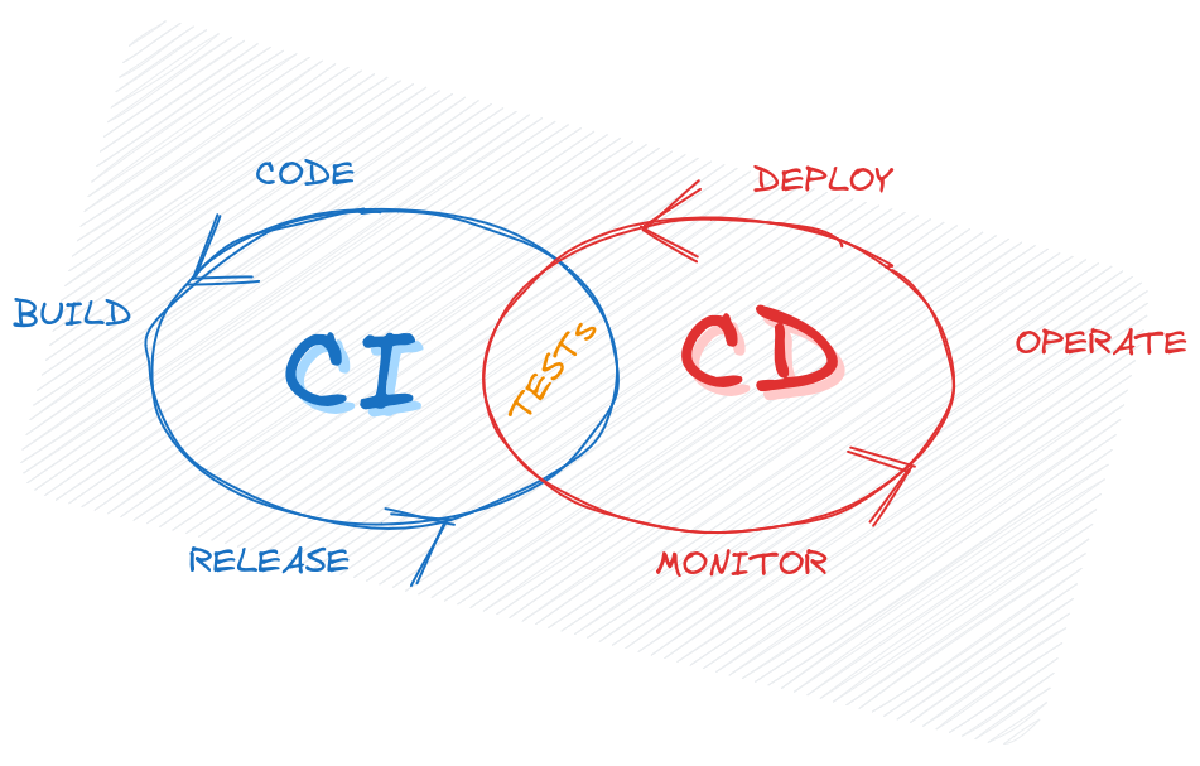In today’s fast-paced software development environment, Continuous Integration (CI) and Continuous Delivery/Deployment (CD) have emerged as fundamental practices that enable teams to deliver high-quality software faster and more reliably. Let’s explore the key aspects of CI/CD, their benefits, and the deployment strategies that help in achieving seamless software releases.
Continuous Integration (CI)#
Continuous Integration is the practice of automating the integration of code changes from multiple contributors into a single project. This approach allows developers to frequently merge code into a central repository, where automated builds and tests are run. The goal is to detect and address integration issues early, reducing the risk of defects and improving code quality.
Key Benefits of CI:
- Automation: The software release process becomes more streamlined with automated builds and tests, reducing manual errors.
- Improved Productivity: Developers can focus on coding, as CI handles the repetitive task of integration.
- Early Bug Detection: Frequent integration ensures that bugs are identified and fixed promptly.
Continuous Delivery (CD)#
Continuous Delivery takes CI a step further by automating the release process to prepare code for deployment to production. This practice ensures that code changes are automatically tested and staged, making it possible to deploy new features quickly and safely.
Key Benefits of CD:
- Accelerated Release Cycles: Automating the deployment process reduces the time it takes to release new features and updates.
- Enhanced Reliability: Continuous testing and staging ensure that only high-quality code reaches production.
- Reduced Risk: With each release being thoroughly tested, the risk of deploying faulty code is minimized.
Continuous Deployment#
Continuous Deployment extends Continuous Delivery by automatically deploying every change that passes the automated tests to production. This approach ensures that new features, bug fixes, and configurations are delivered to users as soon as they are ready, without manual intervention.
Key Benefits of Continuous Deployment:
- Rapid Iteration: Development teams can push updates quickly, allowing for rapid iteration and feedback.
- Sustained Velocity: By automating the deployment process, teams can maintain a steady flow of new features and improvements.
- User Satisfaction: Continuous deployment ensures that users receive the latest updates and features without delay.
Deployment Strategies#
Effective deployment strategies are essential to ensure smooth rollouts and minimize disruptions during releases. Here are some common deployment strategies:
Rolling Deployment:
- How It Works: Gradually replace old versions of the application with new ones, typically in a Kubernetes environment.
- Pros: Easy to set up and avoids downtime.
- Cons: Rollouts and rollbacks can take time, and traffic control is limited.
Blue/Green Deployment:
- How It Works: Run both old and new versions of the application simultaneously, switching traffic to the new version once it’s confirmed stable.
- Pros: Allows instant rollback and ensures a smooth transition.
- Cons: Requires double the resources, making it expensive.
Canary Deployment:
- How It Works: Release the new version to a small subset of users before scaling up.
- Pros: Effective for monitoring error rates and performance; allows fast rollbacks.
- Cons: Rollouts are slower, as they require phased scaling.
A/B Testing:
- How It Works: Route a subset of users to different versions of the application to test new features or designs.
- Pros: Provides full control over traffic distribution and allows data-driven decision-making.
- Cons: Requires advanced load balancing and can complicate error tracing.
Conclusion#
CI/CD practices are integral to modern DevOps, enabling teams to deliver software faster, more efficiently, and with greater reliability. By adopting robust deployment strategies, organizations can ensure seamless rollouts and maintain a competitive edge in the software industry. Whether you’re just starting with CI/CD or looking to refine your practices, understanding and implementing these principles can significantly enhance your software development lifecycle.
